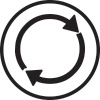June is Men’s Health Month: Here are 4 tips to feel your best
Reading Time: 3 minutes This is a PSA to all men to go get your annual check-up (plus three other healthy habits you should build to stay feeling good).
Reading Time: 3 minutes This is a PSA to all men to go get your annual check-up (plus three other healthy habits you should build to stay feeling good).
Reading Time: 9 minutes Students share what they like (and don’t) about these common contraceptives.
Reading Time: 6 minutes These seven things will make it your best spring ever.
Reading Time: 4 minutes Here’s everything you need to know about the coronavirus (COVID-19), including symptoms, who is most at risk, and what you can do to help stop the spread.
Reading Time: 12 minutes As a society, we are more socially isolated than ever. Learn why building a social support system is the missing piece in your self-care puzzle.
Financial literacy, or the ability to understand and manage one’s financial resources to secure financial well-being, is a vital skill for students. In fact, research has shown that low financial literacy correlates to lower income levels. Although a number of higher education institutions are beginning to offer financial literacy education, it’s clear that many students are entering adulthood with large amounts of debt and without adequate knowledge of how to manage their personal finances. Understanding credit and its implications for future life goals is an important piece of financial literacy.
“The best time to start learning about managing credit is when you’re a student because it’s during this phase in life that it’s easiest to get into debt trouble. In conjunction with learning about credit and what creates credit, it’s important for students to learn about credit scores and how this particular score can affect their lives in many other areas, like buying a house or car, for example.”
—Kelly DiGonzini, CFP, MST, senior financial planner at Beacon Pointe Advisors in California
What students should understand about credit:
To help your students learn these skills, share this article with them.
Texas Tech University’s Red to Black Peer Financial Coaching program was recently named the nation’s best by LendEDU, an online company dedicated to student loan refinancing. The Red to Black program includes one-on-one coaching sessions, outreach booths, and presentations to teach students skills such as:
University of Montana requires every student to complete an interactive online financial literacy course called Transit. Transit covers:
George Washington University has a leading center for financial literacy research called the Global Financial Literacy Excellence Center. The center provides personal finance courses and resources for their students, as well as a series of seminars featuring guest speakers from around the country.
If your institution doesn’t yet offer financial literacy courses or services, consider how these might benefit your students.
Get help or find out moreCredit card basics: Federal Trade Commission
What is a secured credit card?: NerdWallet
Lost or stolen cards: Federal Trade Commission
Protecting against credit card fraud: Federal Trade Commission
Quiz: Test your financial knowledge: Georgia State University
Set yourself up for financial success: Harvard College Griffin Financial Aid Office
Sugato Chakravarty, PhD, professor of Consumer Economics and Management at Purdue University, Indiana.
Kelly DiGonzini, CFP, MST, senior financial planner at Beacon Pointe Advisors, Newport Beach, California.
Askew, A., Goering, M., Rysdahl, I., Smith, C. et al. (2013). Financial literacy and perceptions of post-college life of undergraduates. St. Olaf College. Retrieved from https://wp.stolaf.edu/sociology/files/2013/06/Fianancial-Literacy-and-Perceptions-of-Post-College-Life-of-Undergraduates.pdf
Detweiler, G. (2016, December 8). Just how bad is my credit score? Credit.com. Retrieved from https://www.credit.com/credit-scores/what-is-a-bad-credit-score/
Dornhelm, E. (n.d.). US average FICO score hits 700: A milestone for consumers. FICO Blog. Retrieved from https://www.fico.com/en/blogs/risk-compliance/us-average-fico-score-hits-700-a-milestone-for-consumers/
Federal Trade Commission. (2013, September). Credit scores. Retrieved from https://www.consumer.ftc.gov/articles/0152-credit-scores
Federal Trade Commission. (2013, March). Free credit reports. Retrieved from https://www.consumer.ftc.gov/articles/0155-free-credit-reports
Federal Trade Commission. (2012, August). Setting out on your own. Retrieved from https://www.consumer.ftc.gov/articles/0331-setting-out-your-own
Harvard College Griffin Financial Aid Office. (n.d.). Set yourself up for financial success. Retrieved from https://college.harvard.edu/financial-aid/financial-literacy/credit
Raghaven, D. (2014, July 7). How student loans affect your credit score. US News & World Report. Retrieved from https://creditcards.usnews.com/how-student-loans-affect-your-credit-score
Singletary M. (2017, July 11). Average FICO score crosses a milestone, but let’s not get cocky. Washington Post. Retrieved from https://www.washingtonpost.com/business/get-there/average-fico-score-crosses-a-milestone-but-lets-not-get-cocky/2017/07/11/ac288f6a-6650-11e7-8eb5-cbccc2e7bfbf_story.html?utm_term=.1ae7f5948440
USA.gov. (2017, May 11). Credit reports and scores. Retrieved from https://www.usa.gov/credit-reports
US Department of Education. (n.d.). Interest rates and fees. Federal Student Aid. Retrieved from https://studentaid.ed.gov/sa/types/loans/interest-rates
Reading Time: 10 minutes Follow these four steps if you’re with someone who drank too much, and when in doubt call 911.
Rate this article and enter to win
Are you a master or disaster in the kitchen? Most likely, you’re somewhere in between. If the thought of moving beyond the microwave creeps you out, that’s all the more reason to get the hang of basic cooking techniques and quickie recipes.
Your healthier, prep-it-yourself options go way beyond salads (not dissing salads—just saying). Want some grilled cheese with those fries? Here we demo a revamped version of the classic American comfort meal.
Gooey cheese melted between two slices of bread: Can it get any better than that? Actually, it can.
Veggies
The fresh tomato adds a burst of flavor, Vitamins A and C, and lycopene, an antioxidant. We’re sneaking in a bit of spinach too, because it’s packed with nutrients, including magnesium, calcium, zinc, iron, manganese, Vitamins A and C, folate, and fiber. You can hardly taste the spinach, so even if greens aren’t your thing, this likely will be.
Bread
Go for a whole-wheat or wholegrain bread. This crisps up nicely like a grilled cheese should, provides a sturdy base to balance the melting cheese, and adds fiber and antioxidants. Look for bread that has wholegrains or whole-wheat flour listed as the first ingredient and contains at least 3 g of fiber and 3 g of protein with little to no added sugar (aim for less than 3 g of sugar) per serving.
Cheese
What’s not to love? Cheese is flavorful, it melts into ooey gooey glory, and it tastes ridiculously good. It’s got protein and calcium, but it falls a little short on the healthfulness factor due to the high fat and calorie content. The solution? Choose a strongly flavored cheese, so a little goes a long way. Our favorite for grilled cheese is sharp cheddar. Other options: Swiss, pepper jack (for a spicy kick), goat (if you’re feeling adventurous), or crumbled feta. You can also use dairy-alternative cheeses made from soy or almond.





Who doesn’t love their french fries soft on the inside, crunchy on the outside? But that frying thing is so 10 years ago. Try this much- better-for-you baked version.
This recipe is what you’ve been looking for—the ideal way to recognize World Cancer Day (February 4) and National Wear Red Day (February 5), organized by the National Heart, Lung, and Blood Institute. Right? Way to let those awareness days keep you alive and kicking (as in kickboxing) longer.
Make these fries at home or school, and bake instead of fry them. Baking your fries removes that whole restaurant-trans-fat situation (the worst type of fat for your health) and reduces the amount of fats and calories overall. Deep-frying foods in oil—the way most french fries are cooked—adds a load of fat and increases your risk of chronic health issues, such as type 2 diabetes and heart disease. Also, you won’t set the kitchen on fire.
Serving size: 2







Photography by Joanna Carmona
American Heart Association. (n.d.). Trans fats. Retrieved from https://www.heart.org/HEARTORG/GettingHealthy/NutritionCenter/HealthyEating/Trans-Fats_UCM_301120_Article.jsp#.Voq4smQrIsk
Cahill, L. E., Pan, A., Chiuve, S. E., Sun, Q., et al. (2014). Fried-food consumption and risk of type 2 diabetes and coronary artery disease: A prospective study in 2 cohorts of US women and men. The American Journal of Clinical Nutrition, 100(2), 667–675.
Colorado State University. (2015). Colorado spinach. Retrieved from https://farmtotable.colostate.edu/docs/spinachfactsheet.pdf
Harvard Health Publications. (2015, February 3). The truth about fats: The good, the bad, and the in-between. Retrieved from https://www.health.harvard.edu/staying-healthy/the-truth-about-fats-bad-and-good
MedlinePlus. (n.d.). Food label guide for whole wheat bread. U.S. National Library of Medicine. Retrieved from https://www.nlm.nih.gov/medlineplus/ency/imagepages/19343.htm
TeensHealth. (2014, September). Which bread is better: Whole wheat or whole grain? Retrieved from https://kidshealth.org/teen/food_fitness/nutrition/grains.html
United States Department of Agriculture. (2012, October). Tomatoes, fresh. Household USDA Foods Fact Sheet. Retrieved from https://www.whatscooking.fns.usda.gov/sites/default/files/factsheets/HHFS_TOMATOES_FRESH_Oct2012.pdf
University of California Berkeley. (n.d.). Is cheese bad for your health? Berkeley Wellness. Retrieved from https://www.berkeleywellness.com/healthy-eating/nutrition/slideshow/cheese-bad-your-health
Rate this article and enter to win
Just as you crawl into bed, you remember that you forgot to finish your calculus assignment (now you’ll need to wake up early to do it). Then you start stressing about the presentation you’re giving in social psych. tomorrow. On top of that, you’re still annoyed at your roomie for using the last of your toothpaste without asking. Your mind is racing and your heart starts pounding; how are you supposed to sleep? Sometimes slowing down the mind and body is the hardest part of getting to sleep. But your fellow students have some tips.
“Yoga breathing exercises and resting poses, like child’s pose, revolved abdomen pose, and corpse pose, relax me and make me feel sleepy. It may also helps to have soothing sounds play and focusing on a sound or someone talking,” says L. M., a third-year undergraduate at Queen’s University in Ontario.
“Yoga poses that wind me down before bed help me sleep much better and faster. When I forget, I notice the difference,” says K. S., a third-year undergraduate at Husson University in Maine.
Nearly half of students say they’ve used yoga poses, breathing exercises, or mindfulness practices to help them relax before bed, according to a recent CampusWell survey. Next time you’re feeling antsy at bedtime, try this relaxation sequence.
 Before you jump into bed, try this pose to increase blood flow to the brain and settle your body and mind.
Before you jump into bed, try this pose to increase blood flow to the brain and settle your body and mind.
Don’t stress about making these poses perfect. This is all about finding what works for your body and relaxes you.
 After doing a traditional standing forward bend, try this twisting variation to add an easy spinal stretch.
After doing a traditional standing forward bend, try this twisting variation to add an easy spinal stretch.
Don’t stress about making these poses perfect. This is all about finding what works for your body and relaxes you.

Get down on the floor or onto your bed for this centering, restorative pose.
Don’t stress about making these poses perfect. This is all about finding what works for your body and relaxes you.

This forward bend will help release any tension in your lower back and the backs of your legs, while also helping to reduce stress and anxiety.
Tips: For this pose, it may help to place a folded blanket underneath your backside. You can also place a strap or towel around the balls of your feet and pull on both ends with your hands to assist you in reaching toward your toes.
Don’t stress about making these poses perfect. This is all about finding what works for your body and relaxes you.
 Elevating your legs above your head will help reduce any swelling in your feet or legs caused by standing for long periods of time, running, or hot temperatures.
Elevating your legs above your head will help reduce any swelling in your feet or legs caused by standing for long periods of time, running, or hot temperatures.
Tip: You may start to feel “pins and needles” in your feet or legs during this pose. This is completely normal, but if it makes you uncomfortable you can take breaks and bring your legs down into a cross-legged position.
Don’t stress about making these poses perfect. This is all about finding what works for your body and relaxes you.
 Now for everybody’s favorite pose: Savasana (the one where you get to just lie there).
Now for everybody’s favorite pose: Savasana (the one where you get to just lie there).
Breathing exercise
Add in this breathing exercise to help your mind let go of any thoughts or worries.
Instructions:
Don’t stress about making these poses perfect. This is all about finding what works for your body and relaxes you.
[survey_plugin]
Article sourcesPhotography by Joanna Carmona.
Ally Carlton-Smith, MS, 200-hour Yoga Alliance certified yoga instructor; editor of Student Health 101 high school.
Conboy, L. A., Noggle, J. J., Frey, J. L., Kudesia, R. S., et al. (2013). Qualitative evaluation of a high school yoga program: Feasibility and perceived benefits. Explore: The Journal of Science and Healing, 9(3), 171–180.
Kann, L., Kinchen, S., Shanklin, S. L., Flint, K. H., et al. (2014). Youth risk behavior surveillance—United States, 2013. MMWR Surveillance Summary, 63(Suppl 4), 1–168.
Kudesia, R. S., & Bianchi, M. T. (2012). Decreased nocturnal awakenings in young adults performing bikram yoga: A low-constraint home sleep monitoring study. ISRN Neurology.
Serwacki, M., & Cook-Cottone, C. (2012). Yoga in the schools: A systematic review of the literature. International Journal of Yoga Therapy, 22(1), 101–110.
Yoga Journal. (n.d.). Yoga poses. Retrieved from https://www.yogajournal.com/category/poses/
Rate this article and enter to win
We could all use a little help in the get-stuff-done department. What if you had a tool to efficiently manage your workflow—one that’s easy to make and use? It’s called a Kanban board, and it’s going to change the way you get your assignments (and everything else) done from now until June. Also available as apps.
Each term or semester has goals. Not just in class, but in everything you’re doing. Make the board about doing all the things you want to do—responsibly. Get the work done quickly, meet your goals, and make sure there’s time for friends and everything else.
—Jim Benson, Kanban expert, founder of Modus Cooperandi, and author of Personal Kanban: Mapping Work | Navigating Life (CreateSpace, 2011)
“Personal Kanban is based on years of observation and organizational and cognitive psychology,” says Jim Benson, an expert on adapting Kanban for personal use and author of Personal Kanban: Mapping Work | Navigating Life (CreateSpace, 2011).
One of the main benefits of using Kanban is seeing the workload, says Benson. “We can better manage what we can see. Visualization calms a natural tendency to overanalyze the work before us.” He adds that when we write our work down on sticky notes or cards, it gives our tasks substance and context.
“It’s a simple thing, right?” asks Benson. “Sticky notes on a wall or a whiteboard. But it immediately puts [our] stressful demands into context. There might be a lot of notes there, but it’s a finite number. We look at that and say to ourselves, ‘I can do that.’ As we start to do work, we see the movement; we see the tickets physically move through the board. It’s like our work is running down a field toward the goal or like we’re eating that elephant one bite at a time. Each ticket becomes a mini-goal that is super obtainable—and before we know it, we’re almost done.”
Kanban originated from the Japanese word for “sign” or “signboard.” It was initially designed by Japanese car manufacturers in the late 1950s to help move products efficiently through the production line. Studies show that the Kanban method works, and US manufacturers, software developers, businesses, and students now use it to manage their workload. The power of Kanban is in its straightforward, visual layout.
The old-school to-do lists works well for tasks you can complete quickly. But studying for a biology exam, for example, is something you might be working on all week. The visual nature of a Kanban board allows you to keep track of ongoing projects (e.g., your biology labs) and observe the flow of work. This makes sense; most people recall visuals better than they do audio, according to a 2014 University of Iowa study.

A Kanban board uses sticky notes, cards, or tickets to keep track of assignments. You separate the board into vertical sections based on what you need to do, what you’re currently working on, and what you’ve completed. Then you write down all of your tasks on the notes or cards and place them in the appropriate sections. As you work on a task, you move it through each section until it ends up in the “done” column.
1. Separate a whiteboard, corkboard, or poster board into (at least) three sections.

You can name the sections anything you want. The point is to make sure you have a section for tasks you haven’t started yet, at least one section for tasks you’re working on, and one for tasks you’ve accomplished.
You may find it helpful to separate the middle section (“Doing”) into two: “Started” and “Ongoing.” That makes more space for long-term projects. In addition, your tasks seem to move through the system more quickly, which you may find more motivating.

2. Grab a pack of sticky notes or 3 x 5 cards, and write down all of your assignments, tasks, projects, and to-dos.
For example, you might include tasks like these:

Break larger projects into smaller component tasks, and give each smaller task its own note. Stick your notes or cards onto your board, depending on whether the task has been started, is ongoing, or is complete.
As you work on projects or add new ones, move them through each section on your Kanban board.
Don’t forgo the “Done” column—it’s just as important as the rest. Marking a task as finished could initiate a positive chain reaction to help you get other assignments done, according to research. When participants couldn’t cross a task off their mental to-do list, it hampered their ability to efficiently complete a second task, according to a 2011 study published in the Journal of Personality and Social Psychology.
3. Identify bottlenecks and limit work in progress.
Look for crunch points
Now that you’ve laid out all of your tasks and assignments, take a look at your board. Where are your tasks backing up? Is catching up on your class readings preventing you from moving on to the homework questions? Kanban systems are known for helping users identify inefficient areas and challenging people to think of creative ways to resolve them, writes David J. Anderson in Kanban: Successful Evolutionary Change for Your Technology Business (Blue Hole Press, 2010).
Remember that you can only do so much in a day
Focus on completing small tasks or manageable portions of larger tasks and moving them through the board. As you identify the slow-downs in your schedule, think strategically about how you can set aside some extra time to focus on those areas. That way, you can reduce the amount of work in progress and improve your ability to hit your due dates.
Figure out how you should reallocate time
“Academics isn’t always crunch times and cramming,” says Benson. “Set up a board with the classes and activities for the term. Use either colors or horizontal lanes to know what work is going well and what might need some attention. If you are crushing it in one class and searching in another, use the board to prompt you to spend more time or develop strategies to help out in the [classes you’re struggling in].”
[survey_plugin]
Article sourcesJim Benson, personal Kanban expert, founder of Modus Cooperandi, and author of Personal Kanban: Mapping Work | Navigating Life (CreateSpace, 2011).
Anderson, D. J. (2010). Kanban: Successful evolutionary change for your technology business. Sequim, WA: Blue Hole Press.
Bigelow, J., & Poremba, A. (2014, February 26). Achilles’ ear? Inferior human short-term and recognition memory in the auditory modality. PLoS One, 9(2), e89914. Retrieved from
https://journals.plos.org/plosone/article?id=10.1371/journal.pone.0089914
Heikkilä, V. T., Paasivaara, M., & Lassenius, C. (2016, May). Teaching university students Kanban with a collaborative board game. In Proceedings of the 38th International Conference on Software Engineering Companion (pp. 471–480). ACM.
Joosten, T., Bongers, I., & Janssen, R. (2009, August 19). Application of lean thinking to health care: Issues and observations. International Journal for Quality in Health Care, 21(5).
Retrieved from https://intqhc.oxfordjournals.org/content/21/5/341
LeanKit Inc. (n.d.). What is Kanban? Retrieved from https://leankit.com/learn/kanban/what-is-kanban/
Masicampo, E. J., & Baumeister, R. F. (2011, June 20). Consider it done! Plan making can eliminate the cognitive effects of unfulfilled goals. Journal of Personality and Social Psychology. Retrieved from https://users.wfu.edu/masicaej/MasicampoBaumeister2011JPSP.pdf
Nakamura, M., Sakakibara, S., & Schroeder, R. (2002, August 6). Adoption of just-in-time manufacturing methods at US- and Japanese-owned plants: Some empirical evidence. IEEE Transactions on Engineer, 45(3). Retrieved from
https://ieeexplore.ieee.org/xpl/login.jsp?tp=&arnumber=704245&url=http%3A%2F%2Fieeexplore.ieee.org%2Fxpls%2Fabs_all.jsp%3Farnumber%3D704245
Peterson, D. (n.d.). What is Kanban? Retrieved from https://kanbanblog.com/explained/
Student Health 101 survey, June 2016.
Vista Success. (2015, December 17). How to stay organized in college with Kanban. Retrieved from
https://www.vistacollege.edu/blog/online-learning/how-to-stay-organized-in-college-with-kanban
Rate this article and enter to win
Group projects: a slacker’s dream, or a perfectionist’s idea of cruel and unusual punishment? Like it or not, a group project may well be in your not-too-distant future. Smart planning from the get-go helps us make the best of our differences and end up with a project we can all feel good about. “Students benefit greatly from learning how to work effectively in a group before getting out into the world,” says Dr. Vanessa Shannon, mental conditioning coach at IMG Academy, a training institute in Florida. Click on each arrow for the steps to success.
 |
1. Get to know each other |
If you can’t embrace the people, at least embrace the experience. When instructors and professors assign group projects, everyone’s first instinct is to choose a familiar person to work with. Sometimes, though, you’ll be paired with people you’ve barely spoken to.
It’s important to get a feel for everyone’s personality and interests and their goals and ideas for the project. This can help you identify each other’s strengths and weaknesses and will also help prevent conflicts later.
Getting started in a group Try these tips from the Derek Bok Center for Teaching and Learning at Harvard University:
“You must create an open forum for communication to increase the overall pool of thought,” says Robert Palmer, senior consultant at Booz Allen Hamilton, a consulting firm in Arlington, Virginia. “I notice in groups that certain members have strong opinions and attempt to force them onto their colleagues, who then get defensive, and other great ideas are not heard. Every environment has diversity in terms of working styles and personalities; you need to be sensitive to these.”
“In general, people generate more ideas together. If they are careful to avoid groupthink [a group dynamic that suppresses individual opinion] they can find better solutions to problems.”
—Albert H., fourth-year graduate student, Johns Hopkins University, Maryland
“Putting different brains together can make a great product. Asking many questions and giving personal insights can open others’ minds and can be a great learning experience for everyone involved.”
—Andrea M., fifth-year graduate student, California State University, San Bernardino
“While conducting research every student had different grasps on different aspects of the subject at hand. This shared knowledge contributed much better to our project as a whole.”
—Eliovardo G., third-year undergraduate, California State University, San Bernardino
“At first it can be hard to find everyone’s strengths and weaknesses, especially if you do not know the other people, but once you find your groove it can be so rewarding and a lot less stressful!”
—Suzanne B., third-year undergraduate, Pacific Lutheran University, Washington
 |
2. Assign roles |
Guiding each other toward our natural strengths enhances the project’s end result and gives everyone a chance to shine. If one of your teammates has memorized Macbeth’s soliloquies, by all means give her the opportunity to wow you with her paraphrasing of the Bard. Or if you’ve noticed your partner’s intricate doodles on his arm, encourage him to be the team graphic designer.
Allowing people to choose roles that interest and come naturally to them can help the group succeed, according to Dr. Meredith Belbin, originator of Belbin’s team role theory, a system for identifying people’s strengths and weaknesses in the workplace.
Common group roles include:
+ Where do you fit in? Learn more about Belbin’s team
“There are different types of personalities, such as the quiet person, the naturally loud, the born leader, etc. You each take a certain responsibility that seems more achievable for each individual. It’s all about coordination and sharing the work.”
—Othello X., second-year student, Century College, Minnesota
“In every group project someone will become the leader. This is a hard role to fill as it often means trying to mediate between disputing members, as well as scheduling times to meet and assigning tasks that best suit the abilities of each group member. It is hard and it means more work, but it tends to make the entire project go more smoothly.”
—Ashley J., fourth-year undergraduate, Corban University, Oregon
“It’s great working in a group because each member has different strengths and putting them all together creates an amazing project. We worked together and complemented each other and helped each others’ ideas become part of the project.”
—Pardeep S.*, second-year undergraduate, Drexel University, Pennsylvania
(*name changed)
“There is a great group task-management theory called Skill Mapping. It takes the idea that we all have individual strengths and ‘maps’ them to the constraints and requirements of the project. It’s something I learned through AmeriCorps and group projects afterwards have been wonderful.”
—Sarah Nicole H., fourth-year undergraduate, University of New Mexico
 |
3. Check in with each other |
Be in touch like you mean it:
Keeping things in check as you go along can prevent potential last-minute blowouts. That zany ideas person might need a word with their practical hands-on teammate (“We probably shouldn’t make the lava real lava”).
“We truly worked as team. We made sure to give each other our contact info and also made sure when would be the best time to meet up if we had to. We all had great communication. We also divided our assignments so everyone in the team had the same amount of work.”
—Rosemary H., graduated 2015, California State University, Chico
“Some students may not be as adept at/willing to communicate or understand each other—much less challenge someone’s ideas so that the group may hone the focus of the project. Yet in spite of this, students are willing to agree and strive to see what each other means. This may lead to a disjointed group presentation or something of that nature, but the group members usually walk away satisfied.”
—Matthew H., third-year undergraduate, University of South Alabama
“I am weak in asking someone to repeat or clarify what they just said. This can lead to misunderstandings. I found someone in my group who was stronger at asking for clarity and I gave extra attention to that trait.”
—Becky J., third-year undergraduate, Metropolitan State University of Denver
 |
4. Create personal and team deadlines |
Nothing happens without structure: It’s crushing to have an hour until the assignment is due and more than five hours of work left to be done. Create personal due dates for yourself as well as deadlines for the group as a whole. Getting ahead allows for a final review, and lets you and your crew show up well rested to present your project to the class.
“I had people in my group who were way more organized then me, and it helped, especially when it came to meeting deadlines.”
—Eric C., graduated 2015, Humboldt State University, California
“Students who work together on group projects tend to learn accountability, keeping in contact to decide specifics for how the project is to be completed and assigning final deadlines.”
—Erin D., third-year undergraduate, California State University, San Bernardino
“Some group members had to be reminded more than once to turn in work in a timely manner.”
—Diann G., fourth-year undergraduate, Midwestern State University, Texas
“When working in a group, it doesn’t have to be everyone on the same page but having a good work ethic where everyone is participating and throwing in ideas and able to accomplish a goal.”
—Edward S., fifth-year undergraduate, Temple University, Pennsylvania
 |
5. Give and receive constructive criticism |
In a group project, your classmate’s best interests are also your best interests. Don’t be afraid to speak up—thoughtfully. This is a chance to practice doling out (and taking) constructive criticism.
How to give constructive criticism:
Give a compliment and then state a need. This helps your peer see what needs to be done without feeling estranged from the rest of the group, according to guidelines developed at the University of Wisconsin-Stout. Make sure that the critique you are offering is about the work and is not a personal attack. Starting with the compliment validates your peer’s work and makes them more open to critique without sacrificing the quality of your project. #winwin
What this looks like:
Compliment: “Thank you again for taking on the graphic design portion of the project; your creativity really shows.”
Statement of need: “The assignment asks us to portray the character’s feelings as much as possible. Is it possible to display more emotion in the way the Greek figures are animated?”
“We complimented each other’s work by saying, ‘Hey, good thought,’ or, ‘I think you should make some adjustments.’”
—Da’Meon W., fourth-year undergraduate, California State University, San Bernardino
“We all came together as a group. Our strength was turning down an idea in a positive way and explaining why we did so.”
—Jackson R., third-year undergraduate, Western Illinois University
“Students today are very professional. I am always impressed. I feel privileged sharing ideas and experiences every time I have opportunities to work together.”
—Juan B., graduated 2015, California State University, San Bernardino
“The biggest strength of all members is open-mindedness. If we all have an open mind, we will hear each other and work cohesively. By being open-minded, there’s also a much better chance that you can easily solve problems if they arise.”
—Grace N., third-year undergraduate., Humboldt State University, California
 |
6. OK, it’s not me, it’s you |
What if there’s that one person who’s just not meshing with the group? Perhaps their ideas for the project differ from the direction the group took, or maybe they just aren’t doing their share. For whatever reason (his hamster died, she’s not motivated, they’ve been out sick), you’re dealing with someone who is just not into it.
If it’s not a matter of perspective but of unfinished work, then you may need to talk with your peer. Don’t delay this conversation. Sometimes people aren’t aware that they’re not contributing an equal share. Talk with your group mate one-on-one (an intervention with the whole group might put them on the defensive) and see what’s going on. If they still aren’t pulling their weight, then you may need to revisit those consequences for uncompleted tasks.
“Most groups consist of one or two doing the work and the rest getting the credit. This semester, the professors allowed us to cull [group members] if they were not productive.”
—Joshua H., third-year undergraduate, University of Arkansas–Fort Smith
“Usually there is always someone who leaves the rest of the work to others. This is why member surveys are great for group projects. It gives the incentive to work harder so that your teammates will rank you as you deserve.”
—Kristina W., third-year undergraduate, California State University, San Marcos
“I had a group member who was very rude whenever interfacing over Google Docs or texting. She took an angry tone and cut corners. Mainly she just wasn’t a team player. You have to be willing to put aside that your ideas are the best and be open to the collaborative functionality of the group.”
—Melina L., graduating 2015, California State University, San Marcos